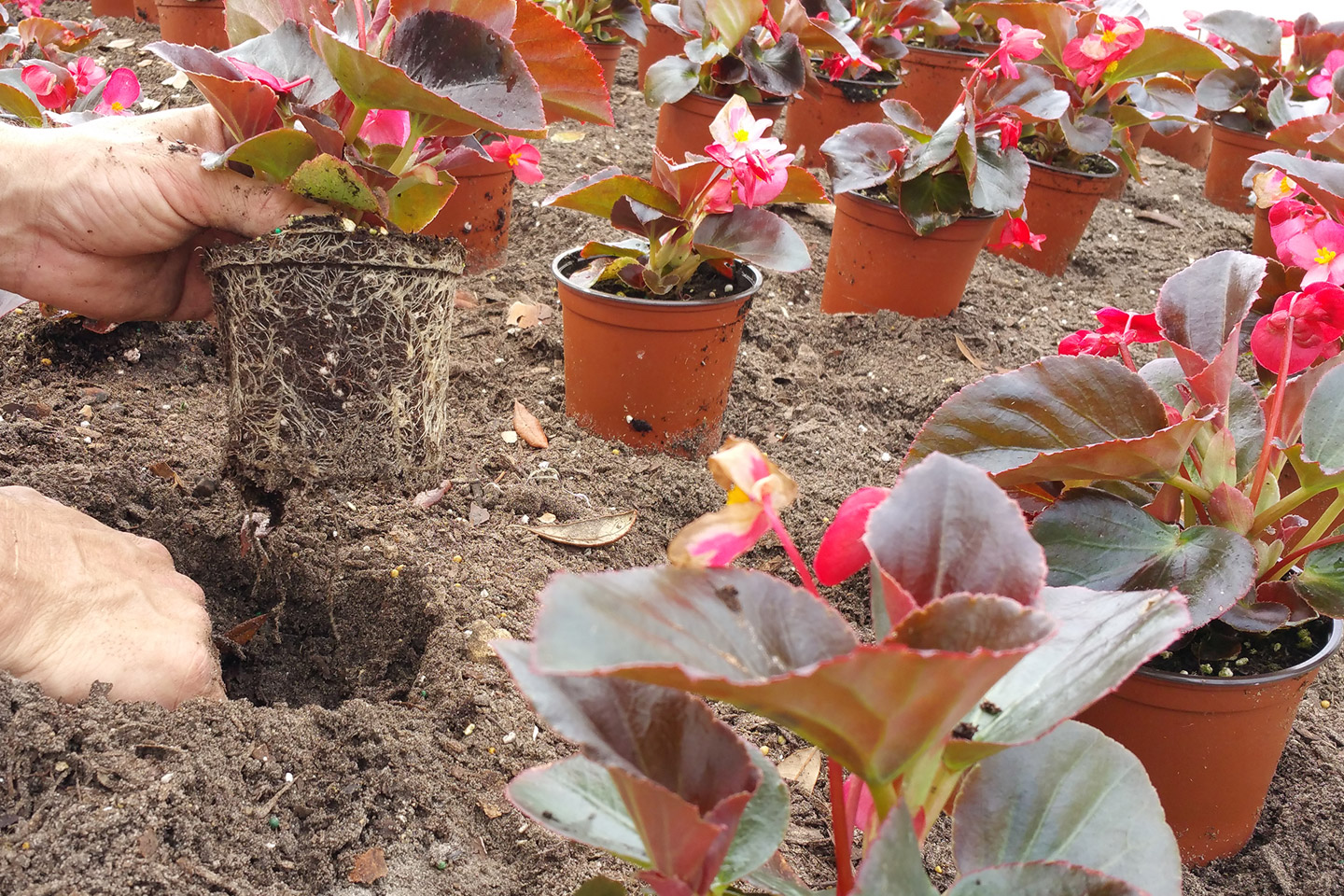The Benefits of Pollinators - Sit Down with CEPRA
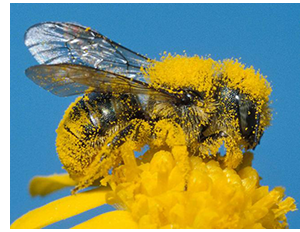 Pollinators are instrumental in maintaining a healthy landscape. They are what keeps flowers blooming and trees fruiting. Pollinators as a category goes beyond just bees. Other insects, such as butterflies as well as some animals, such as bats, are excellent pollinators. Even mosquitoes are important pollinators! Below, we'll describe what constitutes a pollinator, the benefits of having pollinators in your landscapes and gardens, and how to create an environment where they are introduced naturally.
Pollinators are instrumental in maintaining a healthy landscape. They are what keeps flowers blooming and trees fruiting. Pollinators as a category goes beyond just bees. Other insects, such as butterflies as well as some animals, such as bats, are excellent pollinators. Even mosquitoes are important pollinators! Below, we'll describe what constitutes a pollinator, the benefits of having pollinators in your landscapes and gardens, and how to create an environment where they are introduced naturally.
What is a Pollinator?
Pollinators are animals (mostly insects) that facilitate the development of seeds and the fruit surrounding the seeds. They are vital to the production of healthy crops for food, fibers, edible oils, medicines, and other products. As they move through the landscape, the insects carry pollen on their bodies as they travel from plant to plant that provides a vital interaction allowing the transfer of genetic material critical to the reproductive system of most flowering plants. Between 75% and 90% of flowering plant species found worldwide benefit from animal-facilitated pollination to make the seeds that will grow into the next generation of plants. Pollinators provide services to over 180,000 different plant species and to more than 1,200 crops.
The Value of Pollinators
Pollinators add value to our lives in many ways. For hunters, fishing enthusiasts, birdwatchers, and naturists, the benefits of pollinators are clear. Plants, fruits, and seeds derived from insect pollination are a major part of wild animals' diets. More than 90 percent of birds rely on insects as food source at some stage in their life. Diverse and abundant plant habitats that sustain pollinators all support the types of insects that are favored by fish. Birds eat fruits, seeds and nuts which are the product of insect pollination as well as consume the pollinators themselves. Nature walks or a stroll through a botanical garden or detailed landscape would be a very different experience without pollinators.
An estimated 1 out of every 3 bites of food or beverages we drink comes to us through the direct work of pollinators. Most crops that we like to eat and that provide the majority of our nutrition (fruits, vegetables, nuts) require the service of pollinators. Without pollinators, our diet would quickly be limited to a few wind-pollinated crops, and it would become more difficult to acquire the variety of vitamins and minerals that we need to remain healthy.
Pollinator Habitat
A pollinator's habitat depends on the pollinator and their life cycle. Bees can use leaves, mud, sand, plant resins and even abandoned snail shells for their nests, while many butterfly larvae live and feed only on one specific species of plant. Pollinators need a foraging habitat with diverse nectar-providing plant species. These habitats need to be within easy range of food and clean, shallow water.
Plants have developed many complex ways of attracting pollinators. Day blooming flowers are often brightly colored while those that bloom at night are often pale and may produce sweet scents or odors to attract nocturnal pollinators. Similarly, some pollinators have adapted specialized mouth parts and behaviors that enhance their pollination efforts.
Mutual Benefits of Pollination
Pollination is mutually beneficial to plants and the pollinators. While the plants receive free pollination services, the pollinators receive nectar and/or pollen rewards from the flowers that they visit. For Bees the sugary nectar provides them with the sugar to fuel their flights. The pollen contains proteins and amino acids that are vital nutrients needed by the young bee larva.
Types of Pollinators
It is not just the bees (honey, solitary species, and bumblebees), doing the work. Butterflies, moths beetles, wasps and even flies are also important contributors in the pollination process.
Bees - Bees are the most recognized pollinator. Most bees gather the nectar - a concentrated energy source - and pollen, which is a high protein food to nurture their young. Bees prefer a large variety of flowers that they can walk on to sip nectar and are not picky. Honeybees need an abundant and steady pollen source to multiply. Bees typically prefer plants with white, yellow, or blue-purple flowers.
Beetles - Beetles are referred to as "mess and soil" pollinators. Less graceful than other pollinators, beetles work their way through the delicate blossoms searching for food, a mate, or perhaps even the bathroom. Beetles frequently visit marigolds and other flowers close to the ground.
Butterflies - Butterflies often visit round flowers with flared petals, which lead to narrow throats that conceal nectar. They use their long tongues to delicately probe the flowers for nectar. Butterflies need a place to land on the flowers that they visit so they prefer broad, flat faced flowers.
Flies - Some flies act like bees, visiting a wide range of flowers. For example, the Hoverfly is an important pollinator of flowering plants worldwide. They are considered the second-most important pollinator after wild bees.
Moths - Moths tend to go unnoticed even though they outnumber butterflies 10 to 1. They are often active at night and are dull in appearance. They are attracted to night blooming flowers that have white- or cream-colored blossoms that reflect the moonlight.
Wasps - Many hunting, predatory, and pollen wasps rely on freely flowering plants as a source of energy and as a place to meet fertile females that visit the flowers. Blue, purple, white, and yellow flowers are most attractive to wasps. Like bees, wasps are mostly active during the day.
Hummingbirds - Hummingbirds have a long, skinny beak that allows them to reach nectar at the base of flowers. They are very attracted to the color red, and prefer flowers shaped like tubes, funnels, and cups. Hummingbirds are not the only birds that pollinate - in fact, over 2,000 species of birds are active pollinators.
Bats - Famous for being nocturnal, bats choose plants that flower at night. Pollinator bats are typically small in size, and prefer flowers that have large petals, are fragrant, and are pale or white in color. Bats are excellent pest managers, as they often eat insects in the flowers as well as the nectar.
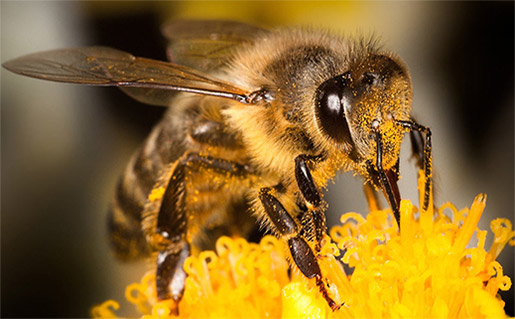
Bee
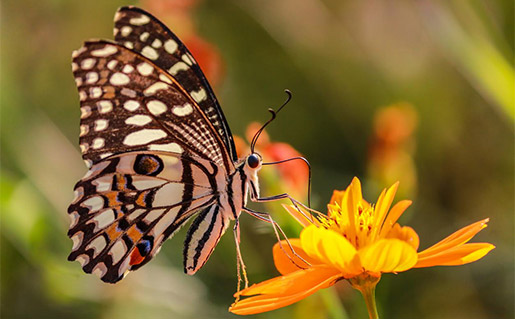
Butterfly
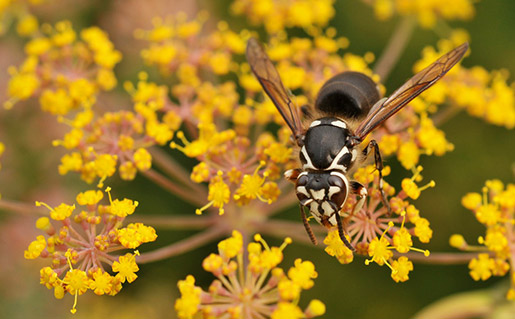
Wasp
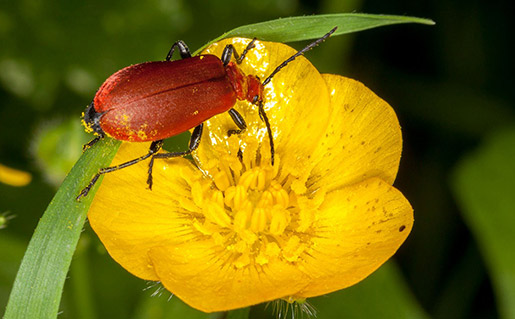
Beetle
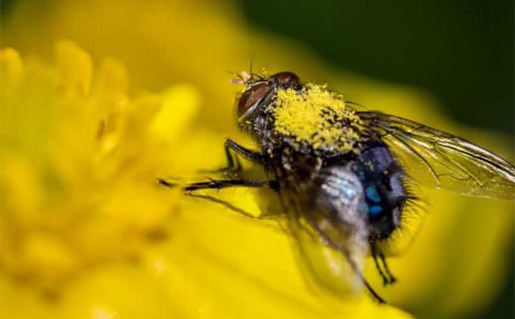
Fly
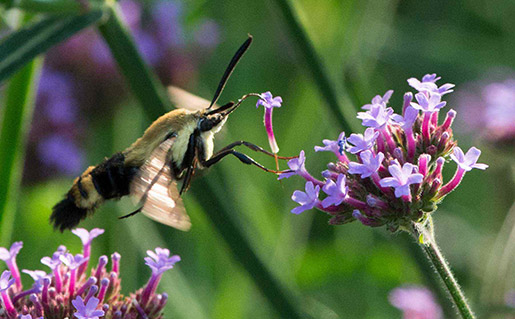
Moth
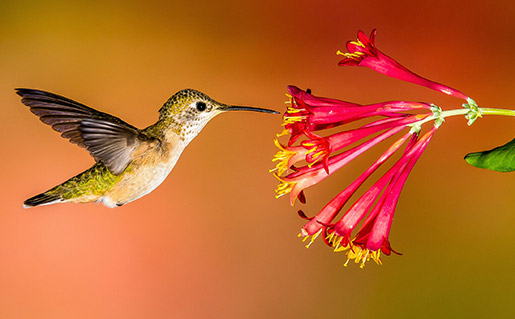
Hummingbird
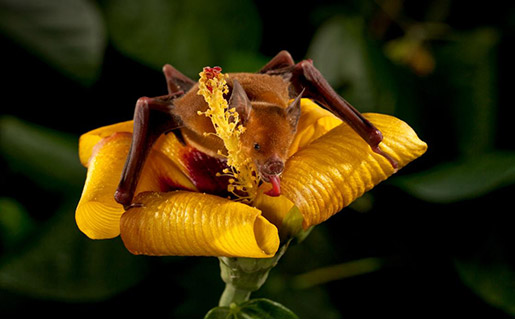
Bat
Establishing a Healthy Pollinator Habitat
You can help our pollinators by creating pollinator-friendly habitats - all without sacrificing the curb appeal of your property. To start, provide a variety of flower colors and shapes to attract different types of pollinators. For better attraction, plant in groups or clumps, rather than single plants. Choose plants that will flower at different times of the year. To go further, design your garden to have three or more different plants blooming at any given time during the growing season. Whenever possible, include native plants in the landscape. By increasing the number of flowering plant species in the landscape, you can increase the abundance and diversity of pollinators that are attracted.
Pollinators at Risk
Despite the vast importance of our pollinators, they are taken for granted far too often. In many areas this essential service of pollination is at risk from habitat loss, by pesticide use and other environmental factors. Human activity, such as urbanization, continually leads to pollinator habitat destruction. The wide use of broad-spectrum pesticides can disrupt or destroy long-established pollinator habitats. Additionally, disease, predation, parasites are also contributing factors that have led to pollinator decline.
The actions you take in and around your landscape can either help reduce or promote the population of pollinators in the environment. We need to all become stewards of the environment, learn about and practice proactive principles of IPM (Integrated Pest Management). IPM aids you in the management of pest damage in your landscape and protects our pollinators by reduction of chemical use. With our pollinators being in a state of decline there are some species that are also in danger of extinction. The use of managed beehives is increasing worldwide is a good sign, however these cannot completely compensate for the loss of wild pollinators.

Conclusion
Pollinators are key to a healthy landscape and abundant garden. Without them, most foods and flowers we enjoy would not be in existence. Types of pollinators go beyond bees and butterflies, and includes beetles, flies, bats, and more. Protecting their existence is crucial to improving our landscapes and being excellent environmental stewards. Creating a program utilizing the IPM method helps ensure their growth and long-term success, all while maintaining a beautiful landscape.
